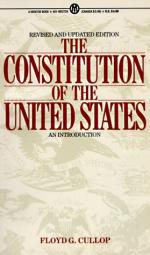
|
| Name: _________________________ | Period: ___________________ |
This test consists of 15 multiple choice questions and 5 short answer questions.
Multiple Choice Questions
1. Article III covers the judicial branch and includes how many sections?
(a) 4.
(b) 5.
(c) 2.
(d) 3.
2. The President has the power to appoint ambassadors with the approval of what group?
(a) House of Representatives.
(b) Congress.
(c) Supreme Court.
(d) Senate.
3. The Constitution was ratified by what date?
(a) July 4, 1788.
(b) July 4, 1789.
(c) March 2, 1789.
(d) July 2, 1788.
4. What form of government is defined as representative?
(a) Egalitarian.
(b) Republican.
(c) Parliamentary.
(d) Totalitarian.
5. Together the group in Philadelphia constructed the Constitution requiring a federal government comprised of which three branches?
(a) President, Senate, and House of Representatives.
(b) Democratic, Republican, and Whig.
(c) Executive, legislative, and judicial.
(d) Democratic, Republican, and Independent.
6. What is one check on the President held by the Supreme Court?
(a) Controls all spending of money in U.S. government.
(b) May refuse to give its consent to approve a Presidential election.
(c) May override President's veto by 2/3 vote.
(d) May bring suits or issue court orders against public officers.
7. What do the states that make up the U.S. constitute?
(a) A confederation.
(b) A federation.
(c) A community.
(d) A symposium.
8. The President is afforded the ability to set up a Cabinet of advisers including how many members?
(a) 15.
(b) 18.
(c) 12.
(d) 13.
9. To be a member of the House of Representatives for any state having more than two representatives, the individual must live in the district within the state he or she represents, except for which two states?
(a) New Mexico, Nevada.
(b) New Mexico, North Dakota.
(c) North Dakota, Nevada.
(d) Arizona, Utah.
10. On what date did the Constitution go into effect?
(a) July 4, 1788.
(b) March 4, 1789.
(c) March 4, 1788.
(d) July 4, 1789.
11. Giving a limited amount of power to the central government and allowing each state to keep the majority of laws and powers was what?
(a) The basis of the initial document.
(b) The basis of the revised document.
(c) The basis for a centralized government.
(d) The basis of a socialist document.
12. Whom was the final draft of the Constitution written by?
(a) Alexander Hamilton.
(b) Benjamin Franklin.
(c) John Jay.
(d) Gouverneur Morris.
13. What is one check on the Congress held by the Supreme Court?
(a) May declare laws Congress passes and President signs, unconstitutional.
(b) May veto bills of Congress.
(c) May call special sessions of Congress.
(d) May veto bills of Congress.
14. Article V addresses amending the Constitution in which two steps?
(a) Proposed, ratified.
(b) Proposed, accepted.
(c) Ratified, signed.
(d) Offered, endorsed.
15. What length of term do members of the Senate serve?
(a) 8 years.
(b) 2 years.
(c) 6 years.
(d) 4 years.
Short Answer Questions
1. How old is the U.S. Constitution in comparison with others?
2. If force is necessary to see that a U.S. law is carried out, the Congress has the power to add what to the U.S. military forces?
3. Articles within the Constitution are further divided into categories called Sections for what purpose?
4. All revenue bills must originate where?
5. Each house of Congress keeps a journal of what it does day to day, and each morning Congress is in session these are published where?
|
This section contains 550 words (approx. 2 pages at 300 words per page) |

|




